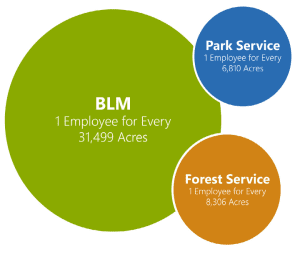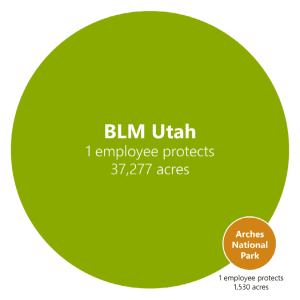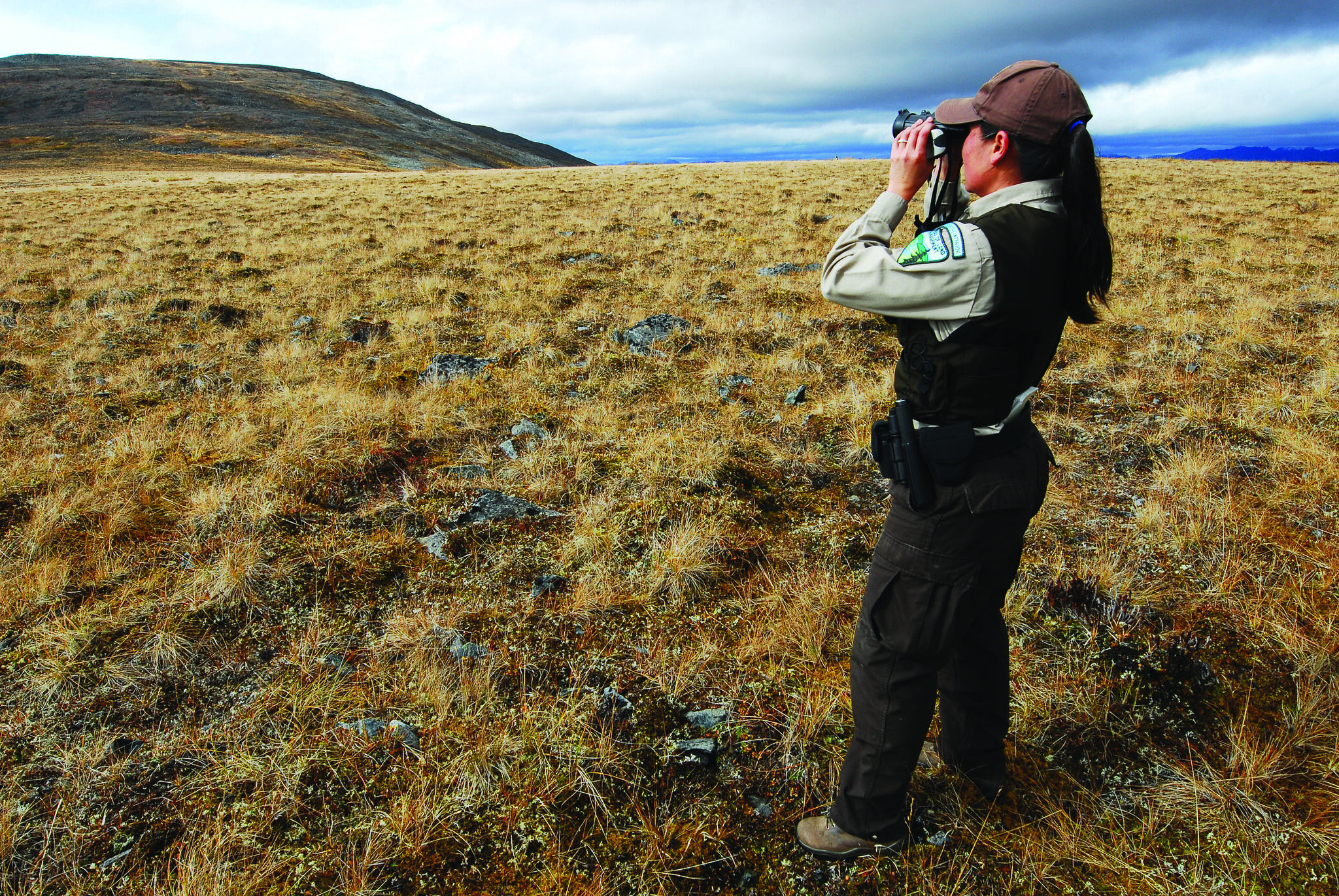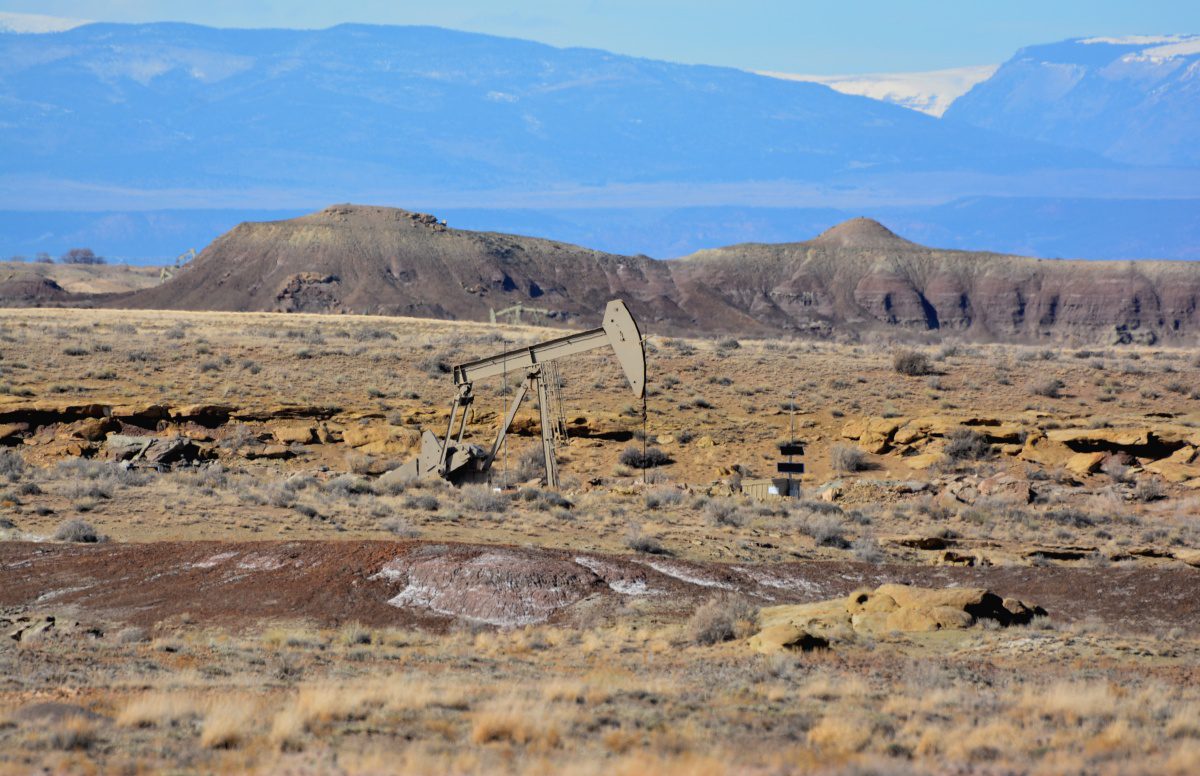How to Build a Better BLM?
The Biden administration has promised a renewed commitment to realizing the potential of public lands to contribute to conservation and climate change mitigation. As the country’s largest public land agency, the Bureau of Land Management (“BLM”) is central to the administration’s entire climate and conservation agenda.
However, improving BLM’s ability to address conservation and climate goals will pose steep challenges to the administration. BLM will need additional resources, changes in culture, and supportive politics, policies, and laws to make lasting changes to improve conservation protections and contribute to climate mitigation goals.
To help achieve these goals, PEER recommends that:
-
- Congress fund efforts to increase staffing for BLM with a goal of 15,000 full-time staff by 2025;
- BLM prioritize positions to staff working to protect land health and biodiversity, and shift assets away from resource extraction staff like fossil fuel leasing and mining; and,
- BLM develop and implement a long-term staffing plan.
I. Increase Staffing and Offer Quality Jobs
BLM manages more than 245 million acres of public land, one in every ten acres of the land in the United States, and approximately 30 percent of the Nation’s minerals. Yet BLM is vastly understaffed, and its staffing levels have been declining. To manage its current portfolio of work and take on new climate and conservation responsibilities, we support increasing BLM staffing levels to at least 15,000 full-time staff by 2025 from its current levels of approximately 8,800.
We recognize that the agency has requested 10,592 FTE for the 2023 appropriations cycle. This is a slightly lower number than the 2010 highest level of staff of approximately 11,000 FTE. When compared to other land management agencies and with regard to current public expectations, 15,000 is an appropriate number. The National Park Service had a record high of 16,400 FTE in 2003 and the Forest Service highest number of employees was 31,000 FTE in 2004. Both Park Service and Forest Service manage significantly less acreage than BLM. This recommendation comes with the support of current BLM employees and is supported by a former BLM Director.
By law, BLM is assigned a “multiple use” mandate, where it must balance extractive uses with “ecological, environmental, air and atmospheric” values, and the need to preserve and protect certain public lands in their natural condition. This means BLM staff manage public lands for a variety of uses such as energy development, livestock grazing, recreation, and timber harvesting while ensuring natural, cultural, and historic resources are maintained for present and future use.
A. Staff Levels Should Reflect the Agency Mission
 To achieve its mission, BLM has a workforce of about 8,800 full-time staff (FTE)1. In addition to its national office, the agency is organized into twelve different state or multistate offices. Each of these state-level offices has field offices that interact more directly with the local communities and manage area resources for diverse interests, from gas drilling to off-roading to wilderness. The agency employs law enforcement, environmental planners, firefighters, oil and gas site inspectors and range technicians to name just a few of the wide variety of positions at the agency.
To achieve its mission, BLM has a workforce of about 8,800 full-time staff (FTE)1. In addition to its national office, the agency is organized into twelve different state or multistate offices. Each of these state-level offices has field offices that interact more directly with the local communities and manage area resources for diverse interests, from gas drilling to off-roading to wilderness. The agency employs law enforcement, environmental planners, firefighters, oil and gas site inspectors and range technicians to name just a few of the wide variety of positions at the agency.
BLM is the most understaffed and least funded of the land management agencies. When you compare the number of acres managed by BLM, the National Park Service and the Forest Service to the number of employees that each agency employs, the results are striking. Leaders can do little to advance the public interest if the agency does not have the capacity to execute their policies.
Furthermore, despite its broad mandate, the number of BLM staff has steadily declined over the last two decades. Between 2003 and 2020, the agency’s workforce fell by roughly 20 percent. In 2010, BLM employed just over 11,000 FTEs3, but by 2020 it fell to 9,458 FTEs4, more than a 14 percent decrease in the same time period.
 Staff shortages abound at BLM offices. One striking example is in the public lands of Utah. Although tourism has skyrocketed, Utah’s Monticello office has not increased law enforcement from the two positions that were created in 1985. Utah has on average one BLM employee working on 37,277 acres of public land. Contrast this to Arches National Park, which is located just five miles from the Moab Field Office and enjoys one Park Service employee for every 1,530 acres of land to manage.
Staff shortages abound at BLM offices. One striking example is in the public lands of Utah. Although tourism has skyrocketed, Utah’s Monticello office has not increased law enforcement from the two positions that were created in 1985. Utah has on average one BLM employee working on 37,277 acres of public land. Contrast this to Arches National Park, which is located just five miles from the Moab Field Office and enjoys one Park Service employee for every 1,530 acres of land to manage.
This decline has occurred as staff experience increases in responsibilities and pressures to do more with fewer resources. For example,
-
- BLM has seen more explosive growth than the ongoing surge in visitation to other agency lands. In the last decade, BLM estimates the number of recreational visits has ballooned nearly 25 percent, from about 59 million in 2010 to over 73 million in 2020.
- Pressure to process permits and prioritize economic considerations has meant that agency staff are increasingly desk bound with few resources to do the vital site assessments, law enforcement, and habitat restoration work.
- Added pressure from the growing size and intensity of rangeland fires and other climate change considerations has strained agency staff.
An instructive example of the on the ground impacts of growing visitation and shrinking staff is the Red Rock Conservation Area just outside of Las Vegas, Nevada. There, red rock formations in the sandstone draw visitors from the sprawling metropolis to off-road, mountain bike, and hike. Staffing levels in the conservation area have remained flat as visitation has increased from 200,000 visitors per year in the 1980s to 3.5 million in 2020. The acreage in the conservation area itself has also more than doubled during that time.
As crowds and lands have grown without commensurate increases in staffing, infrastructure and staff have struggled to match the challenges posed by increased visitation. Unauthorized mountain bike trails now tear through important historical and cultural sites. Graffiti mars canyon walls. Cultural sites face an accumulation of trash and increased looting. Director Tracey Stone-Manning noted some of these problems in her all-staff email in December 2021.
“Our teams aren’t robust enough at present to handle the oncoming workload and expectations. It’s past time to rebuild.”
B. Staff Composition Should Reflect Current Needs
The three core staffing functions that BLM needs to strengthen are its law enforcement, firefighting capabilities, and its response to climate change.
1. Add Staff to Address Law Enforcement Needs
BLM needs to significantly increase the number of ranger staff it employs. BLM employs only about 200 rangers, well below the 224 rangers on patrol in 2012. BLM rangers have a broad range of responsibilities essential to a well-functioning land management agency. Rangers are charged with law enforcement powers and undertake search and rescue operations and are charged with investigating or deterring a wide range of resource offenses, including wildland arson, hazardous materials dumping, archaeological artifact theft.
With an estimated 70 million recreational visits this year, each BLM law enforcement ranger is now tasked with safeguarding some 35,000 recreational visitors on average, annually, over an area approaching the size of Delaware. BLM law enforcement rangers patrol one-tenth of the country’s land area with a force smaller than those of many mid-sized cities,
One effect of the chronic understaffing of BLM law enforcement functions appears to be fewer criminal cases relating to Interior resource protection brought and prosecuted in a generation. PEER has compiled U.S. Department of Justice figures held in TRAC at Syracuse University and found that between the years 2000 and 2021, at Department of the Interior:
-
- Criminal referrals for prosecution dropped 70% (from 6,082 down to 18120;
- Prosecutions filed off those case fell 67% (from 4,233 to 1,381); and
- Convictions secured declined 74% (from 3,328 to 919).
BLM law enforcement also has increased border security responsibilities. BLM helps protect the public lands along the border and are regularly detailed to work with Border Patrol and other law enforcement agencies in the areas of illegal smuggling, resource protection, and identifying transnational threats. In addition to law enforcement rangers, BLM currently deploys 70 special agents, used primarily as detective-level criminal investigators, which represents the same agent force level that BLM had 25 years prior in 1992.
2. Build Up the Staff to Address Wildfires
BLM also needs to increase staff to improve its firefighting abilities. In the vast landscape of the interior West where BLM land dominates the landscape, habitat destruction and climate driven catastrophes are driving the entire ecosystem to the brink of collapse. As in past years, in 2022 large fires will continue to burn across the West. In New Mexico, Arizona, Colorado, and Alaska eight large fires have burned 712,830 acres. More than 4,100 wildland firefighters are assigned to incidents in Alaska, Northern California, Rocky Mountain, Southwest, and Southern areas. BLM employees fight fires alongside their state and county counterparts. Climate change and the growth of rural populations make fighting wildfire an increasingly dangerous occupation.
BLM’s national fire and aviation program has eleven interagency hotshot crews stationed in Alaska, California, Colorado, Idaho, Mississippi, Nevada, Oregon, and Utah. A hotshot crew consists of twenty specially trained firefighters.
Historically, BLM’s wildland fire workforce was seasonal. Recognizing the longer, more intense fire years and the escalating activity due to climate change, the Biden Administration has begun to change the model for the workforce. In 2021, the Biden led BLM indicated that it would provide firefighters with career stability and upward mobility to promote work-life balance and long-term careers by converting 428 seasonal employees to permanent year-round positions.
BLM Deputy Director of Policy and Programs Nada Culver stated in September 2021, “Our people are our most important resource, and this workforce transformation effort will result in more career opportunities and benefits for our wildland firefighters.” Congress and BLM need to ensure that BLM has enough wildland firefighters.
3. Prioritize Positions that Address our Changing Climate and Protect Land Health and Biodiversity
BLM’s pivotal role in acting on the climate and biodiversity crises also requires increases in staffing along with a reorienting of the agency’s priorities and culture. Addressing the imperative conservation challenges BLM faces will require the agency to make decisive changes to protect natural resources even in the face of extreme political pressure.
II. Build Capacity and Strengthen the Political Will to Improve Land Health Standards
BLM is failing to meaningfully address the health of 21,000 grazing allotments covering 155 million acres of land. BLM’s grazing program suffers from poor oversight, inadequate enforcement of environmental laws, and permit backlogs that lead to a blank check permitting process. This failure is due to the lack of political will and the lack of staffing.
Through multiple public records requests, PEER gathered the agency’s data from each state and every field office on land health standards and created an interactive map to create a visual compilation of rangeland health2.
The records reveal that BLM identified 54 million acres (about the area of Colorado) as failing to meet Land Health Standards and that BLM has never assessed about 41 million acres of allotments3. Many factors impact rangeland health including off road vehicles, drought, the spread of invasive species, and fire. Yet on the failing allotments, the agency overwhelmingly cites livestock grazing as the significant cause of failure.
Climate change threatens irreparable ecological damage in arid environments throughout the Western U.S. When looking at failure rates, the Cold Desert ecoregion, with its vulnerable soils, are most susceptible to damage by livestock.
Poorly managed grazing only serves to increase ecological disruption in these sensitive environments.
The Biden Administration’s “America the Beautiful” plan to conserve 30 percent of lands and waters requires strong standards and priorities for land conservation among all land management agencies for the effort to be a success. BLM needs to make large landscape decisions to restore land health to contribute to this broad goal. So, while political will is needed to prioritize a healthy landscape, the agency cannot begin to shift without the additional staffing to do so.
III. Build Capacity and Strengthen Political Will to Address Climate Change and Conservation Issues
Currently, it is impossible to understand the amount of BLM resources and staff devoted to protecting BLM conservation and wilderness areas and addressing climate change versus enabling energy extraction Under the Biden administration, as BLM is being asked to pivot towards a greater focus on climate and conservation but lacks the capacity and leadership to do so effectively and boldly. This will require the hiring of Natural Resource Specialist like wildlife biologists, botanists, and hydrologists, and Rangeland Specialists and management to support the pivot in agency priorities. It will also require that Congress and the public have a better understanding of the amount of BLM resources and staff devoted to addressing climate and conservation issues versus enabling energy extraction to ensure the agency is properly fulfilling its multiple use mandate.
Management priorities at BLM have a history of mirroring the economic interests of Western communities. In fossil fuel rich communities in Wyoming and New Mexico, the agency has skewed towards promoting extraction, often at the expense of biodiversity and threatened and endangered species. In public lands ranching communities across the West, the agency has worked hand in glove with ranching interests. This tight relationship with resource users is a natural outgrowth of the agency’s resource use mandate and the natural resource dependent economies of the rural West.
As the economy and cultural identity of the West continues to change, BLM must play catch-up when it comes to serving resource protection over exploitation. The good news is there is growing public support for action on climate and conservation. Public opinion polling of voters in eight interior Western states show that climate change and conservation are critical and growing concerns in the region. Around three-quarters of Westerners recognize the importance of public lands for local economies and support the Biden administration’s goal to protect 30 percent of land by 2030. Most Westerners believe that climate change is happening, and Congress should be doing more to act on climate.
A 2021 PEER survey of current and former staffers highlights the challenges BLM faces in becoming a force for conservation. More than three quarters of BLM staff do not believe BLM land health and resource protection are improving. Most of the employees surveyed reported that BLM: does not have the staffing or resources to accomplish its mission, is not meaningfully integrating climate change into resource planning, does not prioritize resource protection, and is not relying on the best available science in decision making.
Leadership also fails to back employees who face personal repercussions when their work is perceived as interfering with uses like grazing. “There’s no ability to ‘blame up’” one employee reported. “Our supervisors don’t have our backs.” This lack of backbone and accountability can be incredibly detrimental to agency efforts to be responsible stewards. By leaving employees hung out to dry the agency is giving in to a culture of intimidation and bullying from local economic interests. An employee described this phenomenon as a “cowboy culture of social control.”
The necessary culture shift at BLM will require strong leadership from the Secretary of the Department of the Interior to the BLM Director down to field office leadership. BLM employees have laid out to PEER a roadmap of reforms necessary to meet the conservation imperatives of the agency and undo the failed agency culture. Key recommendations include:
-
- Clear guidance that science will be valued in agency decisions and conservation will be a clear priority of BLM.
- New conservation focused leadership positions that include a regional conservation director to oversee the management of the National Conservation Lands System, Conservation Areas, Wild and Scenic Rivers, and designated Wilderness, and a climate director in each state office to lead regional and field offices.
- Conflict-of-interest provisions that prevent employees and their families from holding grazing permits, mineral leases, or land inholdings.
IV. Develop and Build a Long-Term Staffing Plan
A key part of any plan to increase staffing is the need for BLM to have a comprehensive long-term plan to effectively staff and manage its workforce. In a 2021 Government Accountability Office report the GAO cites a near-time impact of inadequate planning is an over-reliance on detailing staff to fill key positions at headquarters and in state offices4. This constant churn of senior employees disrupts continuity in the agency and delays planning processes as staff face “confusion and inefficiency” in addressing core agency functions like policy direction and guidance.
As part of this employee staffing plan, BLM should commit to creating more pathways for hiring people who are underrepresented in the agency’s upper ranks and acting swiftly to meet its core staffing functions like firefighting and law enforcement. In addition, it should boldly confront the staffing challenges of addressing climate change and biodiversity loss and that gives the public a clear understanding of the resources and staff devoted to protecting land health and addressing climate change versus enabling energy extraction.
BLM needs to rebuild the trust of its employees. With bold and significant improvements in capacity and thorough long-term planning, the agency may be able to overcome the fallout from being a politically abandoned agency.
 Chandra Rosenthal is the Director of PEER’s Rocky Mountain Office located in Denver, CO.
Chandra Rosenthal is the Director of PEER’s Rocky Mountain Office located in Denver, CO.
References
- In 2021 the Government Accountability Office estimated BLM’s total staff at 8,800 permanent workers, though recent budget documents estimate the number at roughly 9,800.
- www.peer.org/mapping-the-range/
- Land Health Standards, 43 CFR 4180.1, 4180.2 refers to the quality and sustainability fo waterways, habitats, soil, flora, and fauna on the range.
- GAO Report, BLM, Better Workforce Planning and Data Would Help Mitigate the Effects of Recent Staff Vacancies, Nov 2021, GAO-22-104247, See also, GAO Report, Human Capital Challenges at the BLM, Sep 2016, GAO 16-742




